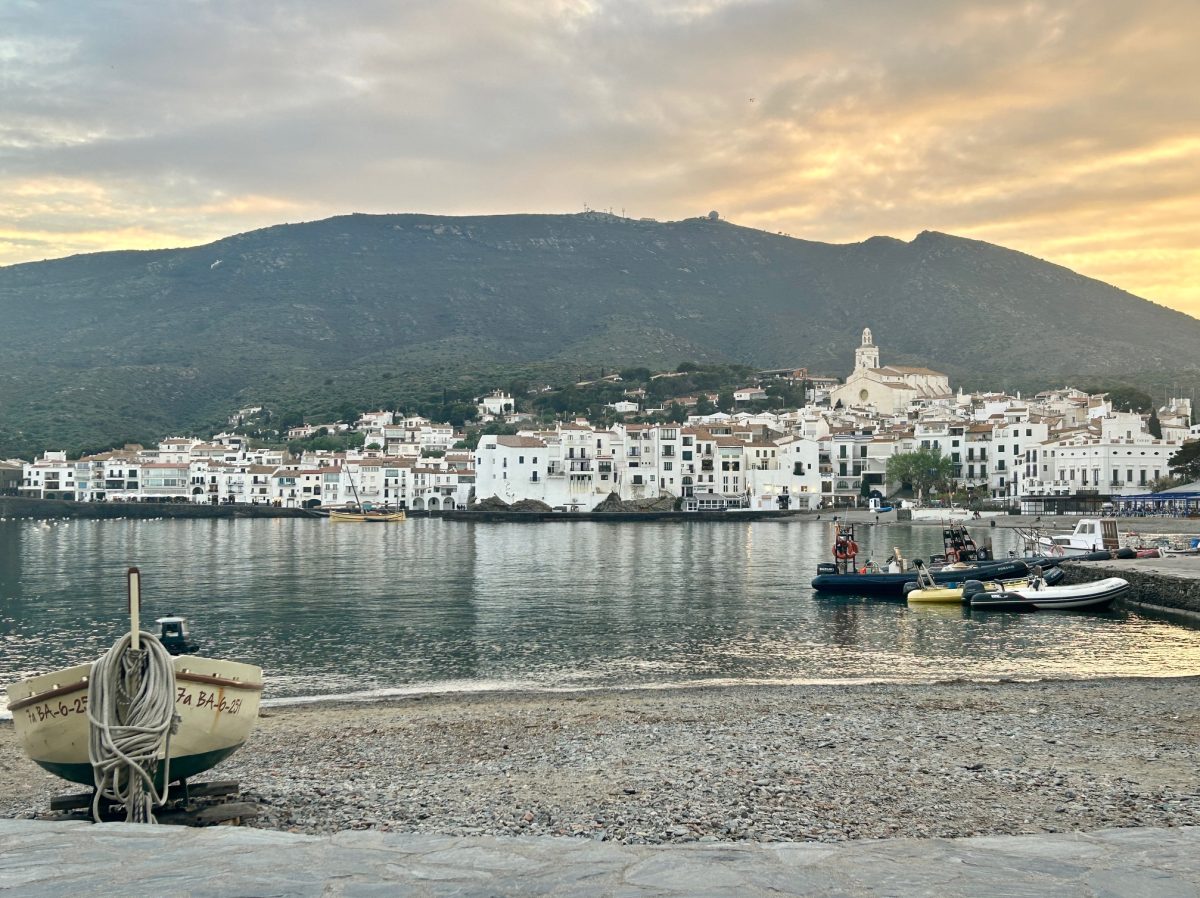It is said Straubing is a “Beer City” best known for it’s Gäubodenvolksfest; a 10 day beer festival held every August which features specially prepared beers from 7 local breweries. The beers are served across 7 huge festival tents which together can accommodate 27,000 seated guests and so make this beer festival the second largest in Bavaria (after Munich’s Oktoberfest). We missed this year’s Gaubodenvolksfest (not that Vanya would have been particularly interested) but I reproduce below three photos (not mine) which suggest that, going forward, this is a must for me…
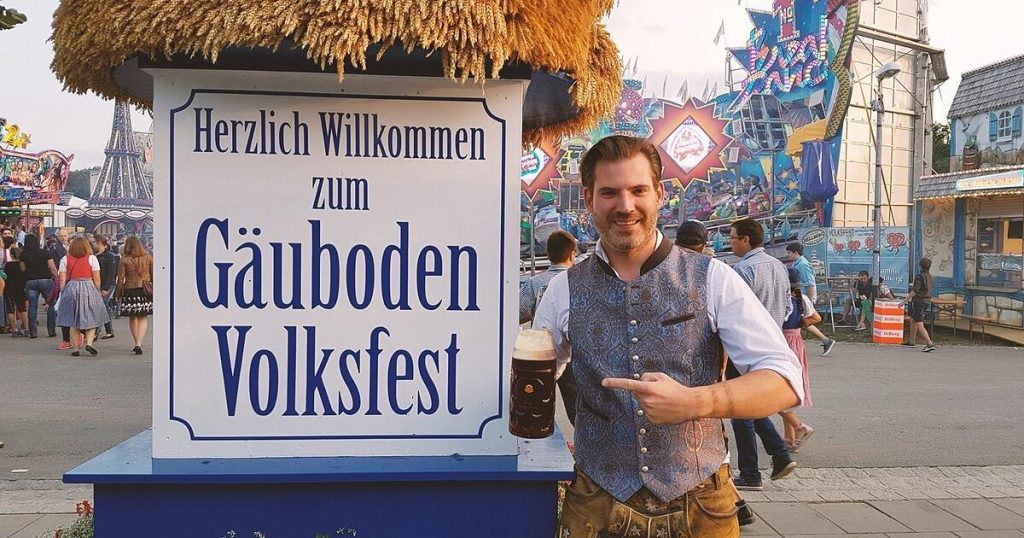
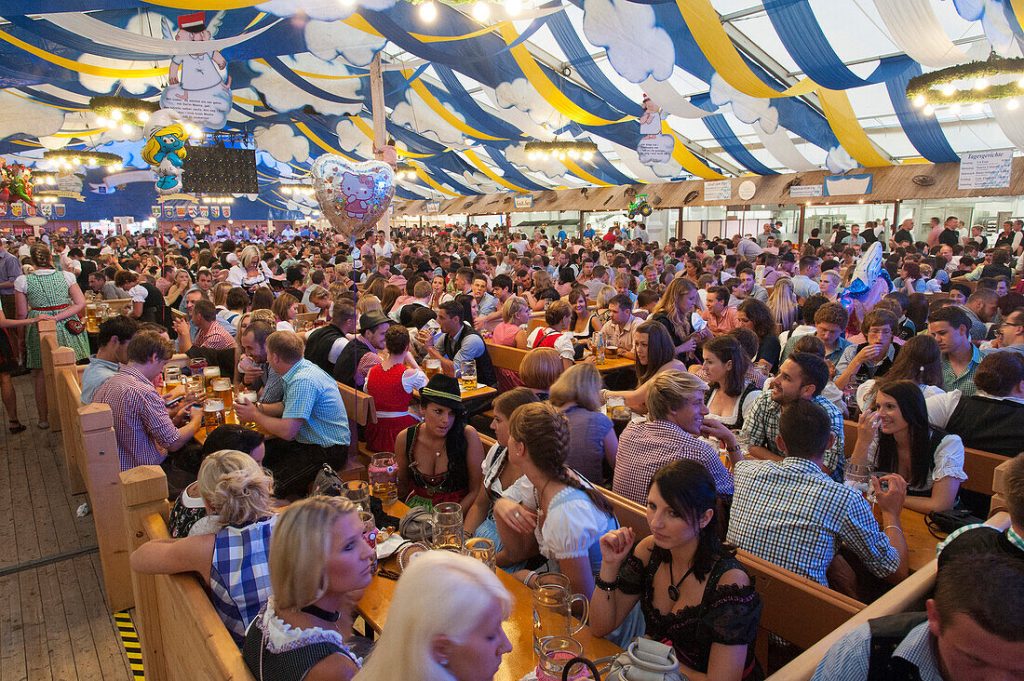

Beer City or not, Straubing is one of the more interesting towns in this part of Germany and well worth a visit. Situated on the banks of the Danube in the east of Bavaria between Regensburg and Passau it is a well preserved historical and picturesque little city where we were quite happy to spend two full days.
Immediately after settling in at Campingplatz der Stadt der Straubing I went off to explore the city and find a restaurant for the evening. From the campsite it is an easy 10-15 minute walk along a cycle path to the city centre. The path runs parallel with the river through a small wood at the back of the campsite until it reaches the Schlossbrucke. Cross the Danube over this bridge and you’re in the city. In fact, the first building to be encountered is the Herzogsschloss; a Ducal Palace built by Duke Albrecht I during the 14th century. There’s a small museum inside the palace but the building is not always open to the public (probably because it also houses the city’s tax office) but it is possible to visit the inner courtyard. The city centre is almost immediately behind the palace.

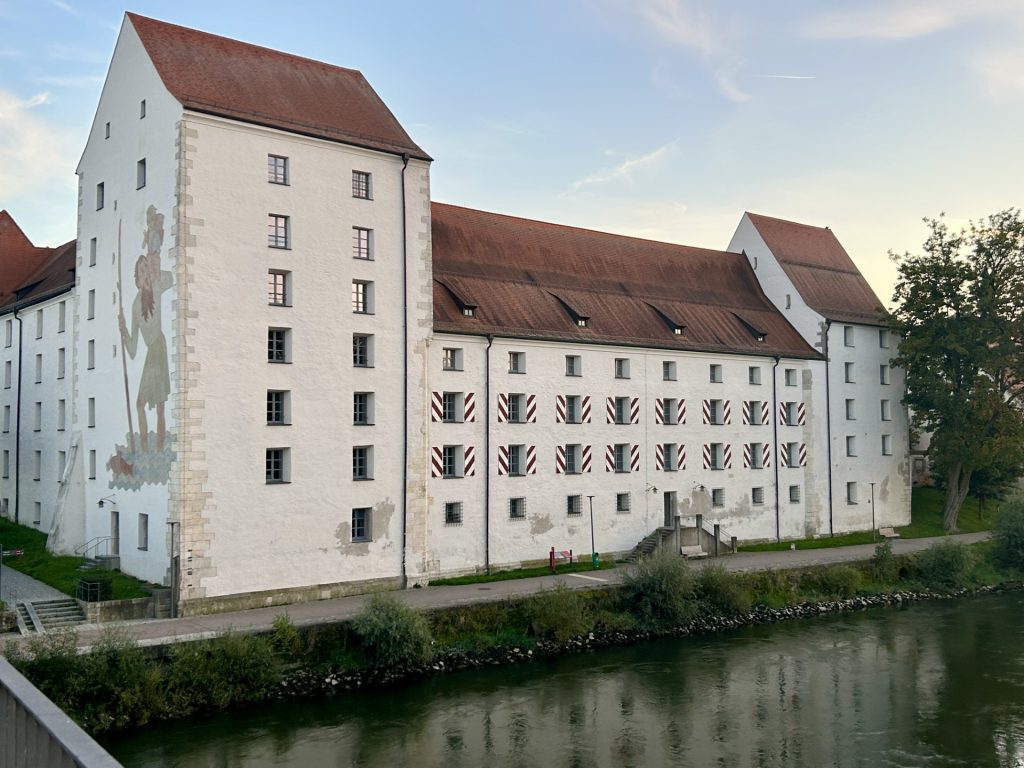
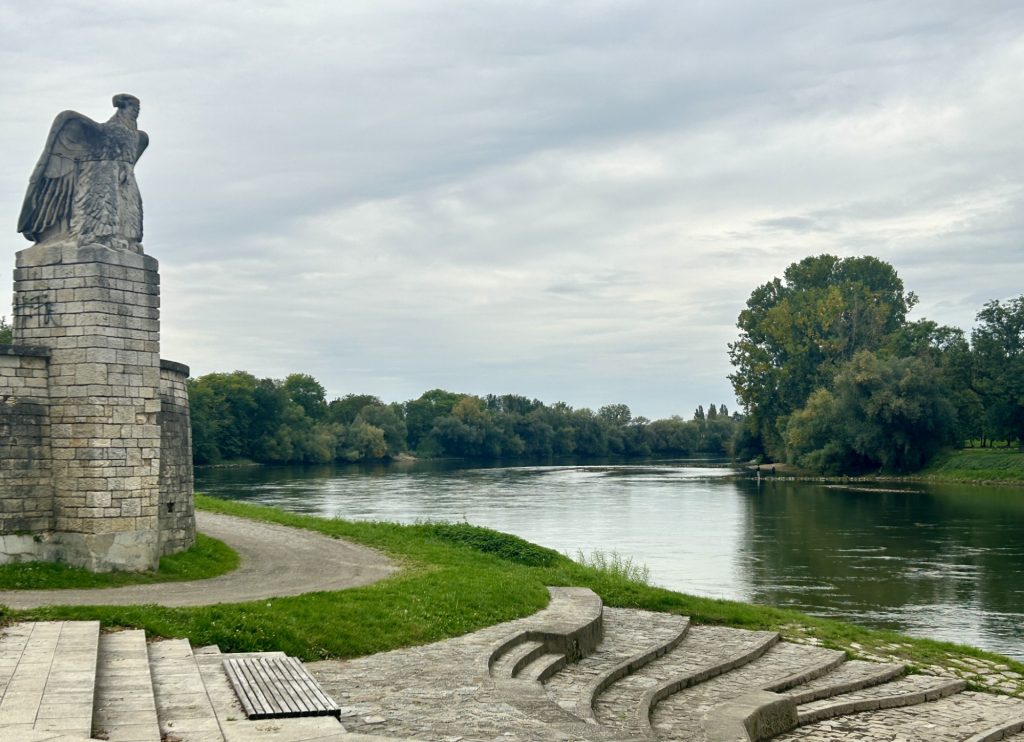
The beating heart of Straubing is it’s spacious mostly pedestrianised Markplatz which is a little way behind the Herzogsschloss. This market place is a good half a mile long and is actually formed by two squares, Ludwigsplatz to the west and Theresienplatz to the east, which are separated by an imposing watchtower (the 68 metre high Stadtturm). Both squares are lined with brightly painted townhouses with steep gables and opulent Baroque and Rococo facades. The ground floors of most of the townhouses have been converted into shops and cafes and, of course, the ubiquitous ice cream parlours – this is, after all, Germany and the Germans favour ice cream as much as the Italians. Other features on the squares include two impressive fountains (the Tibertiusbrunnen on Theresienplatz and the Jacobs Fountain on Ludwigsplatz); the beautiful marble Trinity Column (the Dreifaltigkeitssaule) with it’s gold top and; the Rathaus (city hall).
During the period April to September there are guided tours to the top of the Stadtturm which until 1930 was still occupied by a watchkeeper. The tours take in his rather spartanly furnished apartment. He couldn’t have been very comfortable living in the tower but the views over the city are second to none.
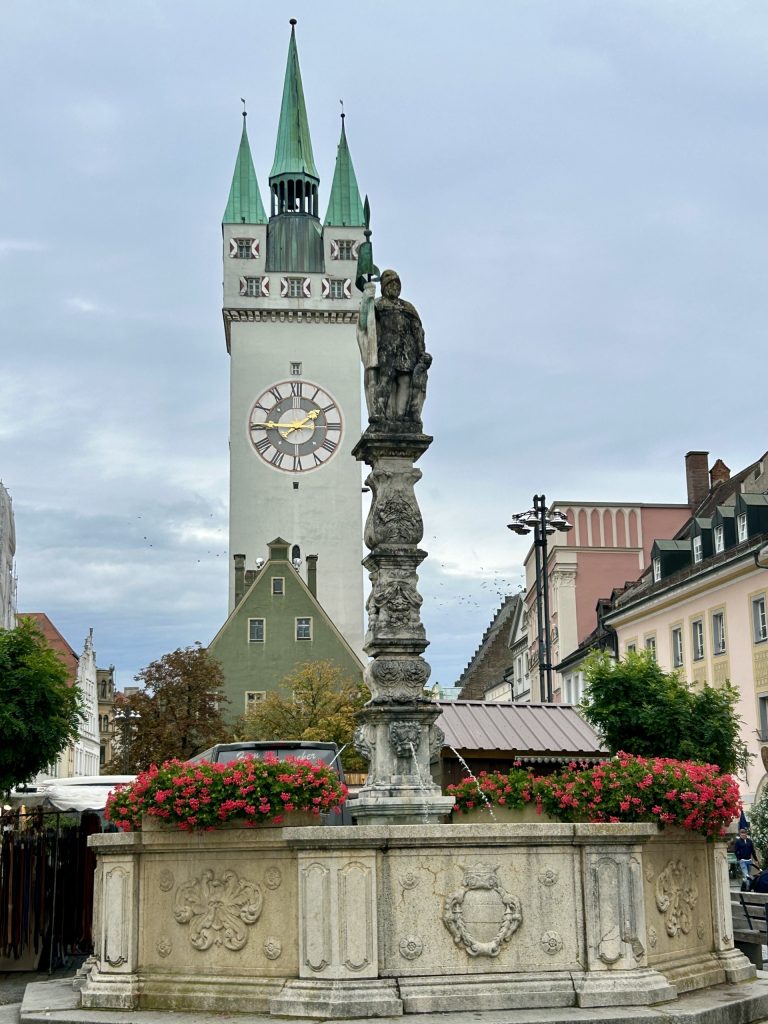
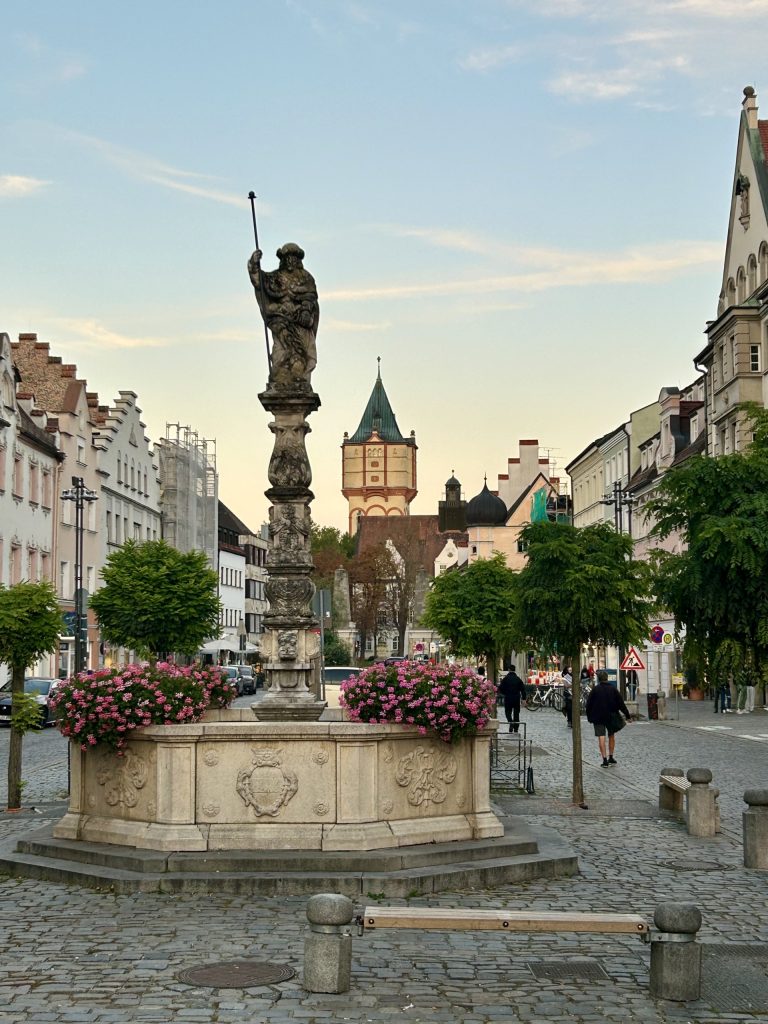

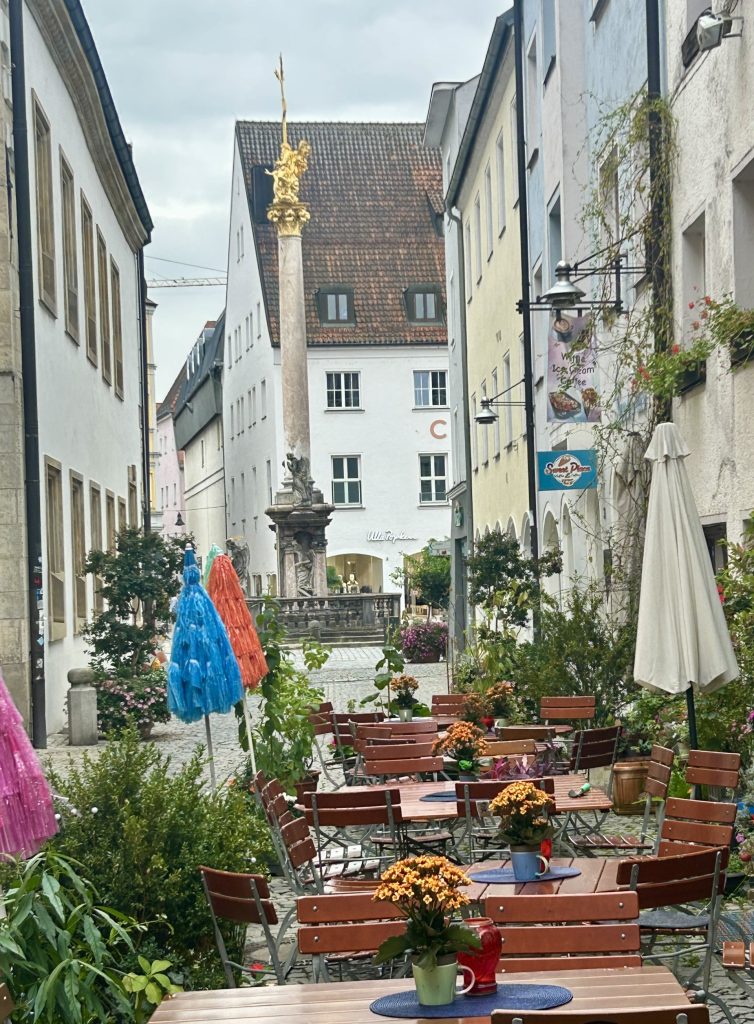


I entered just one church during this visit (the Papal Basilica of Saint James & Saint Tiburtius) and it was getting late in the day when I did that. As a result, many of my photos were rushed and underexposed and I’m therefore relying on just two photos from Straubing’s tourist office website to reflect the building’s grandeur and elegance. The first photograph, of the exterior of the church, appears to have been photographed from the Stadtturm and it depicts a stately and very imposing church which dominates Straubing’s old town. The second photo illustrates how bright and majestic it is inside the church. The Basilica is easily the largest church in the city and while it’s exterior Gothic architectural style can appear dark and somewhat austere, the inside is glorious. In addition to some quite remarkable architecture (highlights of which are the pulpit and some of the many side chapels) and a beautiful 15th century altar taken from a Nuremberg Monastery, there’s a brilliant selection of stained glass windows which includes the “Moses Window” supposedly designed by Albrecht Durer. How I wish I could have made it up into the bell tower.


Straubing is home to a number of magnificent churches, including the 12th century Church of Saint Peter and the 14th/15th century Catholic Church of Saint Vitus or St Veit. There’s also an old Carmelite Church which was sold to the University of Munich in 2018 and, alongside it, another small but impressive church which was part of an Ursuline Convent. Finally, there’s the former Jesuit Church at the top end of Theresienplatz. Few of these churches were open during my visit but I was advised that some of them are as opulent inside as the Papal Basilica. Next time?
During our two days in Straubing I made no less than four trips into the city and walked many miles (most of them tracking down ‘stolpersteine’) but I also spent a fair time on the Marktplatz; just sitting in the sunshine over a cup of coffee or an ice cream, watching the world go by. People watching is one great pastime although next time I’ll forego the ice cream. How on earth can anyone as small as Vanya eat that much ice cream in one go?

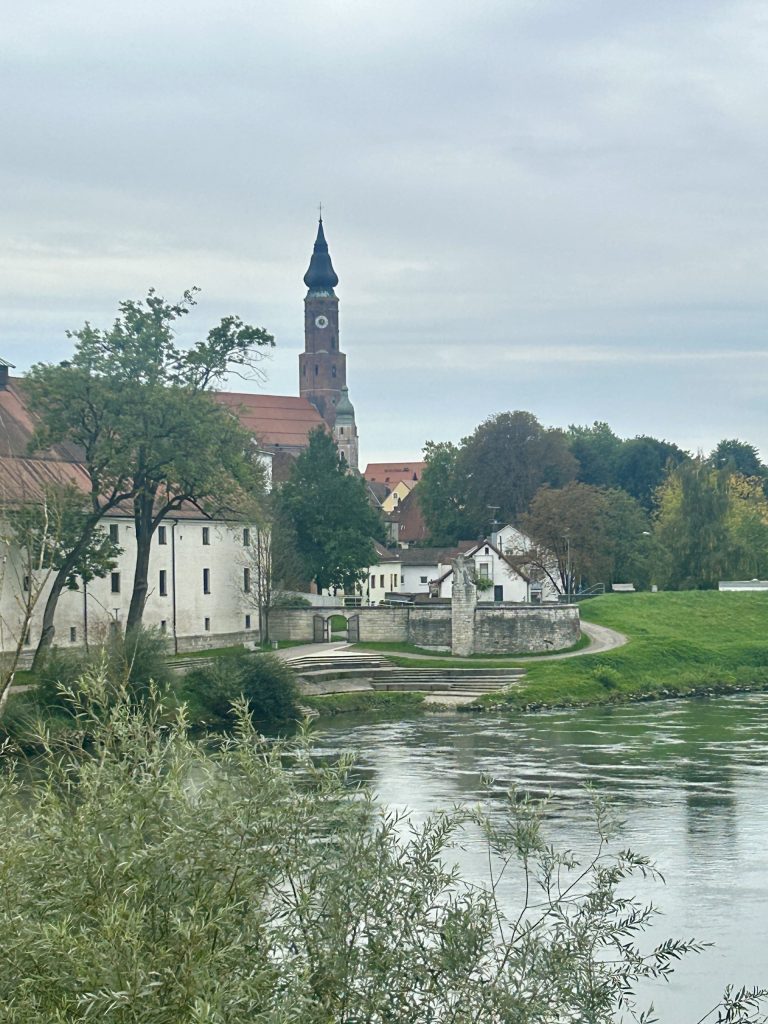
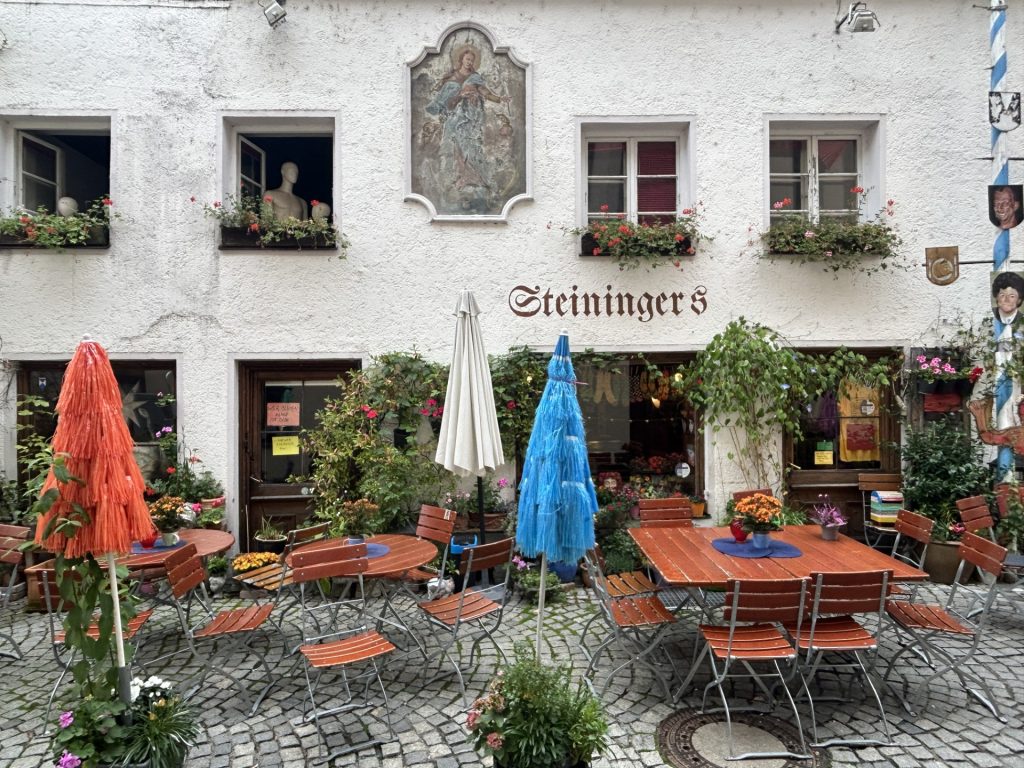
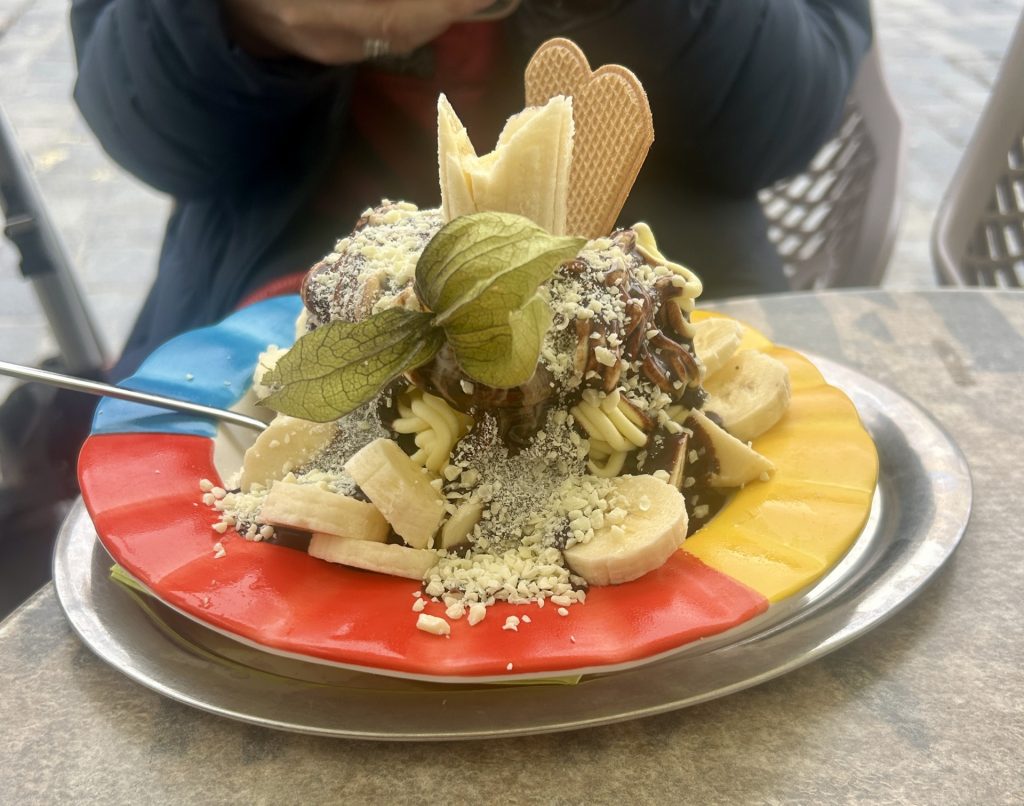


Another occasional interest of mine, while touring Europe, is research into local history and/or legends. One story I stumbled across in Straubing, and which seems so preposterous one could be forgiven for thinking it a legend, is the tragic but true story of Agnes Bernauer.
It is believed Agnes Bernauer was born the daughter of a bath house attendant or barber in Augsburg around 1410. Being a commoner, little is known about her early life but she grew up to become the beautiful mistress of Albrecht, a son of Duke Ernst I of Bavaria-Munich. The duke grew increasingly unhappy as the couple’s relationship developed and/but was absolutely horrified upon learning they had secretly married each other. Agnes’s social standing was such that no child born of this union could possibly inherit the Dukedom. With the threat to his dynastic succession now very real, the Duke urged his son to put Agnes aside but Albrecht refused. The Duke’s response was to wait until his son was away on a hunting holiday and then have Agnes seized, condemned for witchcraft and executed. She was drowned in the Danube on 12 October 1435 while her husband Albrecht was still away.
Unbelievably the father and son were soon reconciled and, within a year, Albrecht had taken another wife. He married the aristocratic Anna of Brunswick-Grubenhagen and went on to have 10 children and inherit all his father’s titles. It is not known where Agnes’s body is but in 1436 the Duke had a memorial chapel built in the cemetery of the Parish Church of St Peter’s in Straubing (to atone for her murder?) and Albrecht paid for a perpetual mass which continues on an annual basis to this day (and that’s his conscience salved?).
The story would perhaps have died with the drowning of Agnes Bernauer but it somehow survived through the efforts of numerous poets, authors, screenplay writers, musical composers (Carl Orff made it into an opera – Die Bernauerin) and; no less a personage than King Ludwig I of Bavaria (who wrote a poem of his own about the tragedy). It’s future was assured when, in 1935, the city of Straubing decided to hold an Agnes Bernauer Festival every four years. This open air theatre production of the story, staged by 200 amateur actors in front of some 20,000 spectators in the courtyard of the Herzogsschloss, continues to this day.
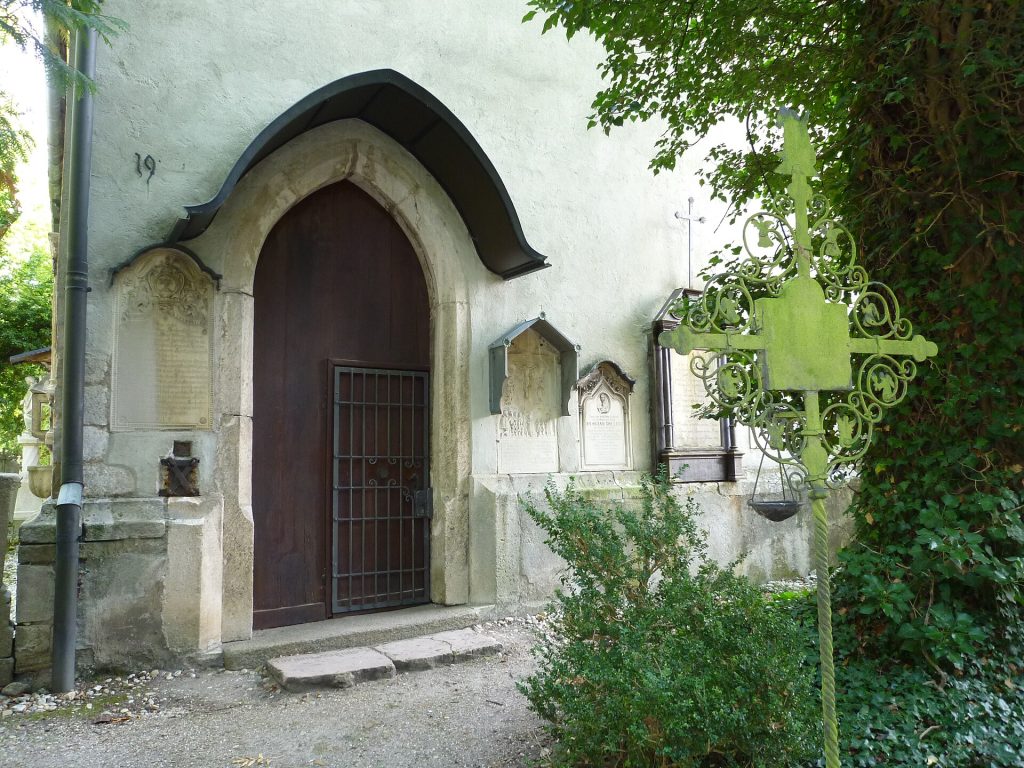
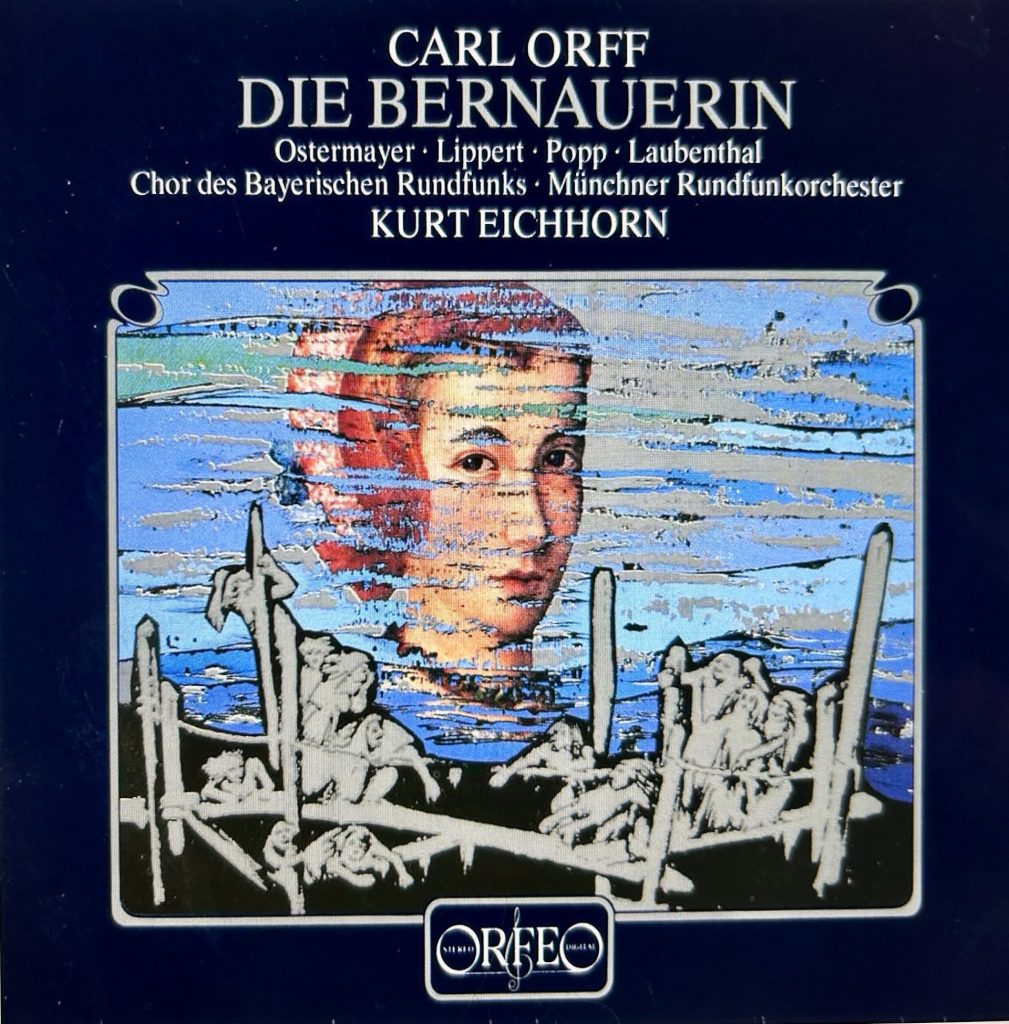
Oh… and before I finish (I still have quite a few blog entries to catch up on), the Campingplatz de Stadt on Gstutt Island is great for a stopover. We have no hesitation in recommending this campsite. The restrooms are clean and well maintained and the small onsite restaurant-bar, which specialises in home cooked Vietnamese cuisine is excellent.

